Dog food storage is all about keeping your pup’s meals fresh and safe. Proper storage not only maintains the flavor and nutritional value of the food but also helps prevent spoilage and pests. Let’s explore some easy tips and tricks to ensure your dog’s food stays in tip-top shape!
Understanding Expiration Dates and Shelf Life
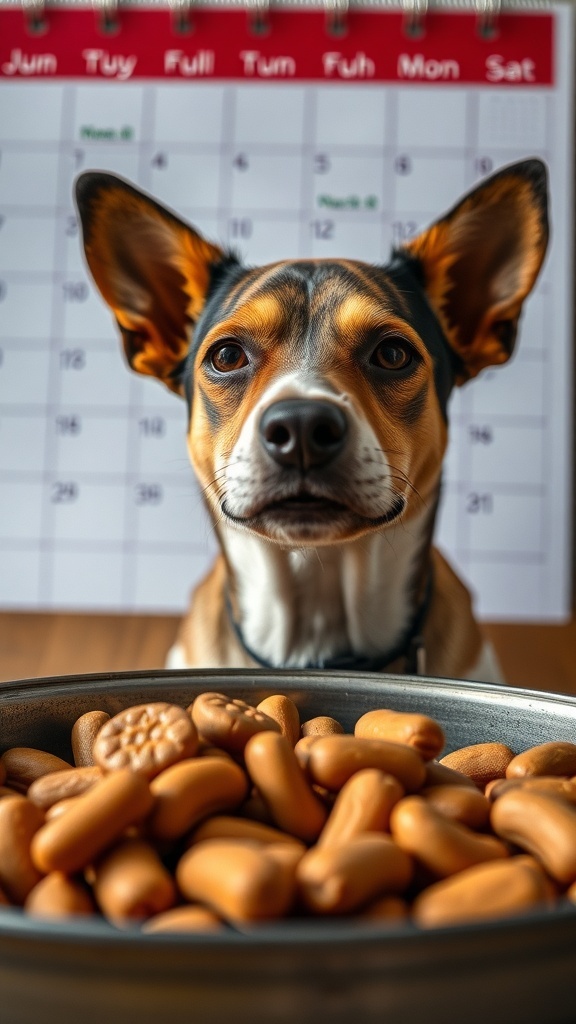
When it comes to dog food storage, knowing the expiration date is key. The image shows a dog food package with a date label. This label is important for ensuring your pet’s food is fresh and safe to eat.
Expiration dates tell you how long the food will maintain its quality. Dog food can lose its nutrients over time, so it’s best to use it before the date passes. The label also helps you avoid feeding your dog spoiled food, which can lead to health issues.
It’s a good idea to check the packaging regularly. If you have opened the bag, store it in a cool, dry place. Keeping it sealed can help extend its shelf life. Always remember to look for any signs of spoilage, like an unusual smell or changes in texture.
Ideal Storage Locations in Your Home

When it comes to storing dog food, choosing the right spot in your home is key. The image shows a cozy kitchen setup with neatly organized containers. This is a great example of how to keep dog food accessible yet tidy.
One ideal location is your kitchen. It’s often the most convenient place to store pet supplies. You can easily grab the food while preparing meals. The containers in the image are clear, making it easy to see when it’s time to restock.
A pantry can also be a smart choice. Keeping dog food in a cool, dry place helps maintain its freshness. Just make sure it’s out of reach of curious paws!
Another option is a dedicated pet corner in your home. This can be a small cabinet or shelf where you keep all pet-related items. It keeps everything organized and makes feeding time a breeze.
Labeling and Organizing Your Dog Food
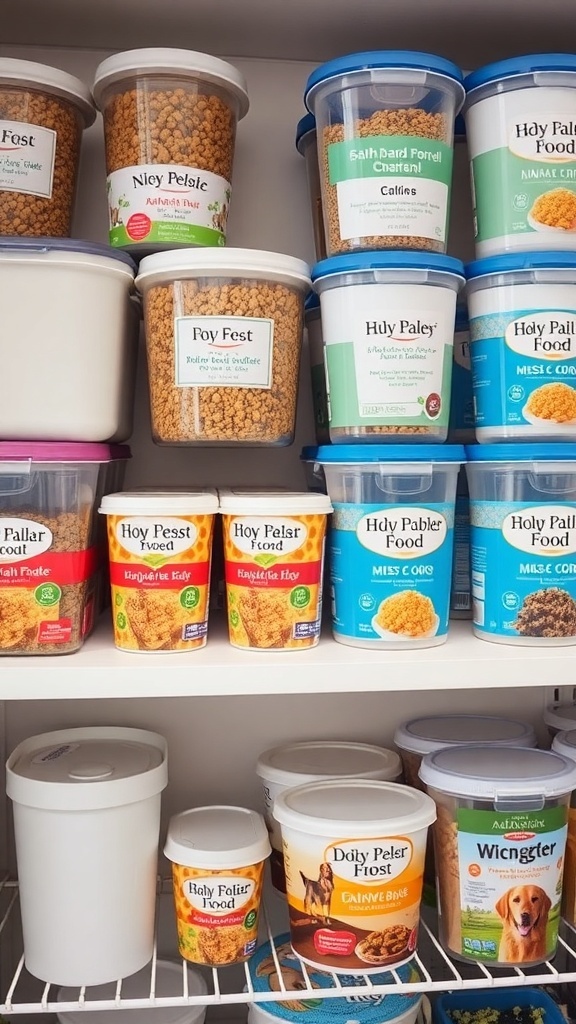
Keeping your dog food organized is key to making mealtime easy and enjoyable. The image shows a well-organized pantry shelf filled with labeled containers of dog food. Each container has a clear label, making it simple to find the right food for your pup.
Using containers with labels helps avoid confusion, especially if you have multiple types of food. You can easily see what you have on hand, which prevents running out unexpectedly. It also keeps your pantry tidy and ensures that your dog’s food stays fresh.
Consider using clear containers so you can see the contents without opening them. This way, you can quickly check if you need to restock. You might also want to group similar types of food together, like dry kibble and wet food, for even easier access.
Labeling is not just practical; it can also be fun! You can use colorful labels or even pictures of your dog to personalize the containers. This adds a bit of flair to your pantry while keeping everything organized.
Benefits of Airtight Sealing
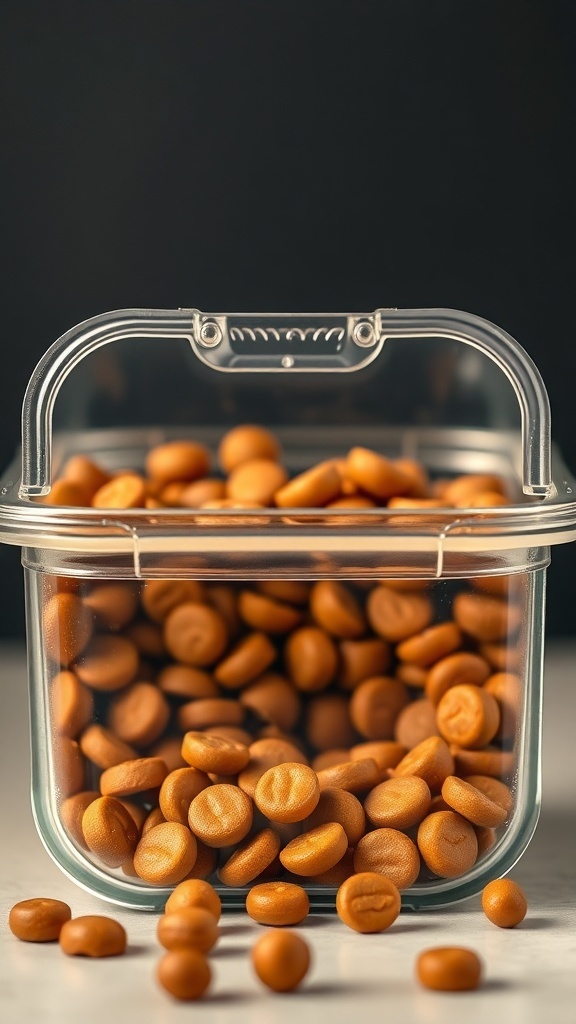
Storing dog food properly is key to keeping it fresh and tasty. An airtight container, like the one shown in the image, is a great choice. It helps keep moisture and air out, which can spoil the food.
One major benefit of airtight sealing is that it prevents pests from getting into the food. Bugs and rodents are attracted to pet food, and a sealed container acts as a strong barrier. This means your dog’s meals stay safe and clean.
Another advantage is that airtight containers help maintain the food’s nutritional value. When food is exposed to air, it can lose vitamins and minerals over time. By sealing it tightly, you ensure your dog gets all the nutrients they need.
Lastly, using an airtight container can keep odors contained. Dog food can have a strong smell, and a good seal keeps your home smelling fresh. Plus, it makes it easier to store the food without worrying about any lingering scents.
Portion Control for Freshness
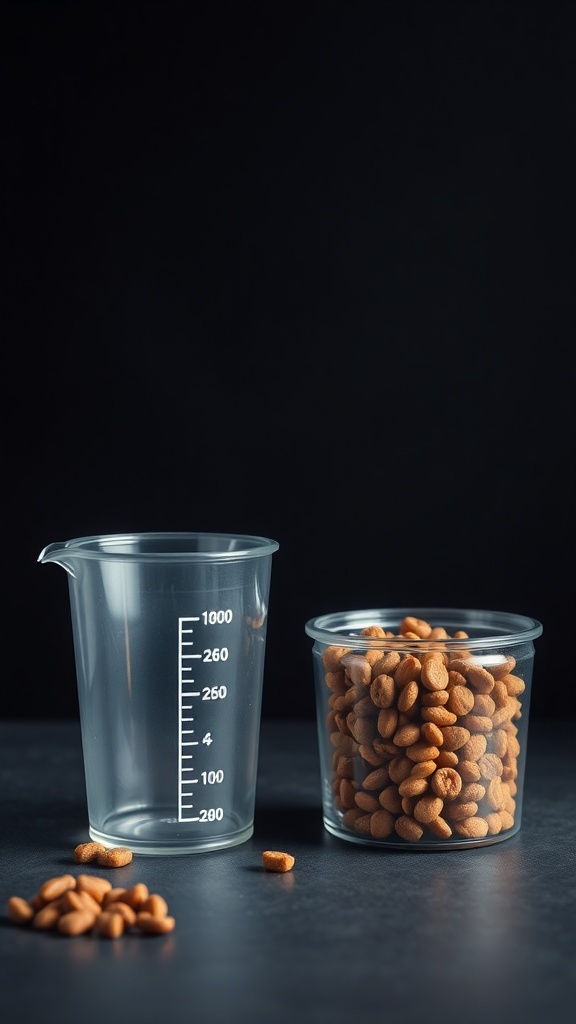
Storing dog food properly is key to keeping it fresh and tasty. The image shows a clear measuring cup next to a container filled with dog kibble. This setup highlights the importance of portion control.
Using a measuring cup helps you serve the right amount of food each time. This not only prevents overfeeding but also keeps the food fresh longer. When you take out only what you need, the rest stays sealed and protected from air and moisture.
Choosing the right storage container is also important. A sealed, airtight container can keep your dog food from going stale. It’s a simple way to ensure your pup enjoys every bite. So, grab that measuring cup and start portioning out meals for your furry friend!
Using Vacuum Seal Bags for Long-Term Storage
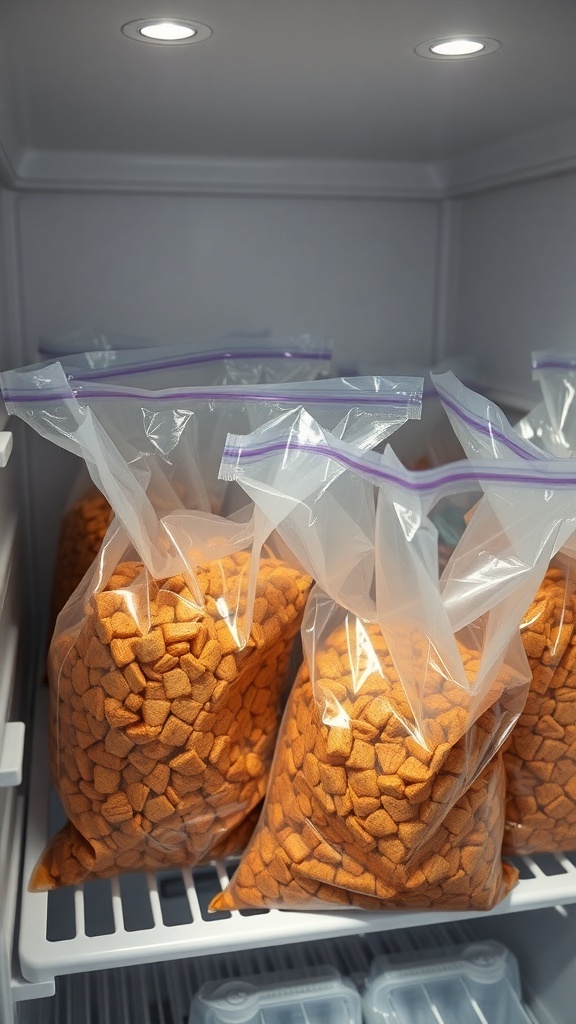
Storing dog food properly is key to keeping it fresh and safe for your pet. Vacuum seal bags are a fantastic option for long-term storage. They help keep air out, which can spoil the food over time.
In the image, you can see several vacuum-sealed bags filled with dog food. These bags are neatly organized in a freezer, showcasing a smart way to keep your dog’s meals fresh. The bright orange color of the kibble stands out, making it easy to identify the food inside.
Using vacuum seal bags not only extends the shelf life of the food but also saves space. You can stack these bags easily, making your storage area tidy. Plus, they’re easy to open and reseal, so you can grab a portion whenever needed.
When sealing the bags, make sure to remove as much air as possible. This will help prevent freezer burn and keep the food tasting great. If you have larger quantities, consider portioning them out into smaller bags for convenience.
Overall, vacuum sealing is a simple yet effective way to ensure your dog’s food stays fresh and delicious for longer. It’s a small step that can make a big difference in your pet’s diet.
Choosing the Right Storage Container
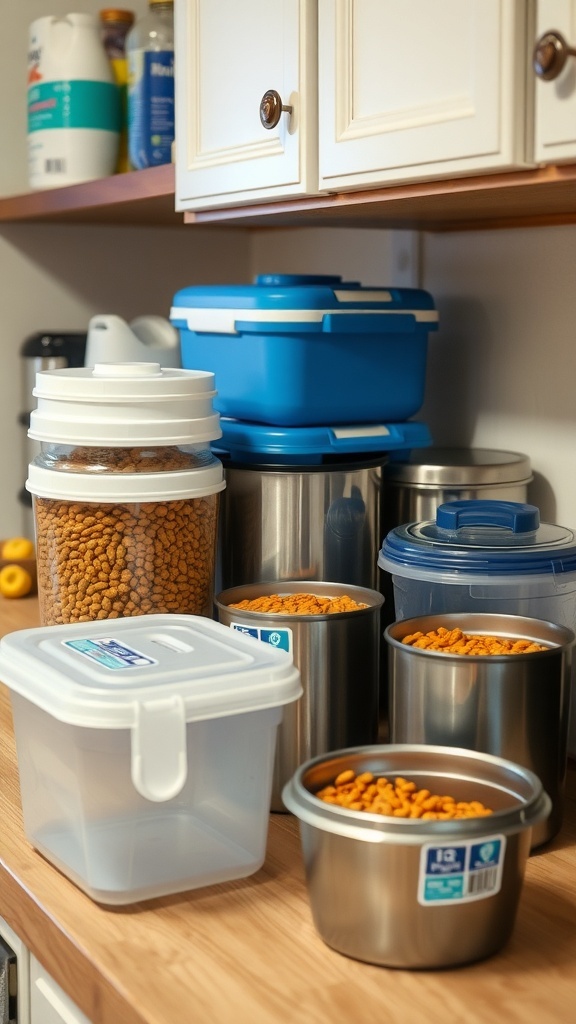
When it comes to storing dog food, picking the right container is key. The image shows a variety of storage options, each designed to keep your pup’s food fresh and tasty. You can see containers made from different materials, like plastic and stainless steel, which offer unique benefits.
Plastic containers are lightweight and often come with airtight seals. This helps keep moisture and pests out. On the other hand, stainless steel containers are durable and easy to clean. They also resist odors, making them a great choice for long-term storage.
Look for containers that are easy to open and close. Some have snap-on lids, while others might have a twist-off top. Choose what feels most convenient for you. Also, consider the size. If you buy in bulk, a larger container will save you time and effort.
Don’t forget about labeling! Keeping track of when you opened the bag can help you monitor freshness. A simple label can make a big difference in ensuring your dog’s food stays at its best.
Preventing Pests and Contamination
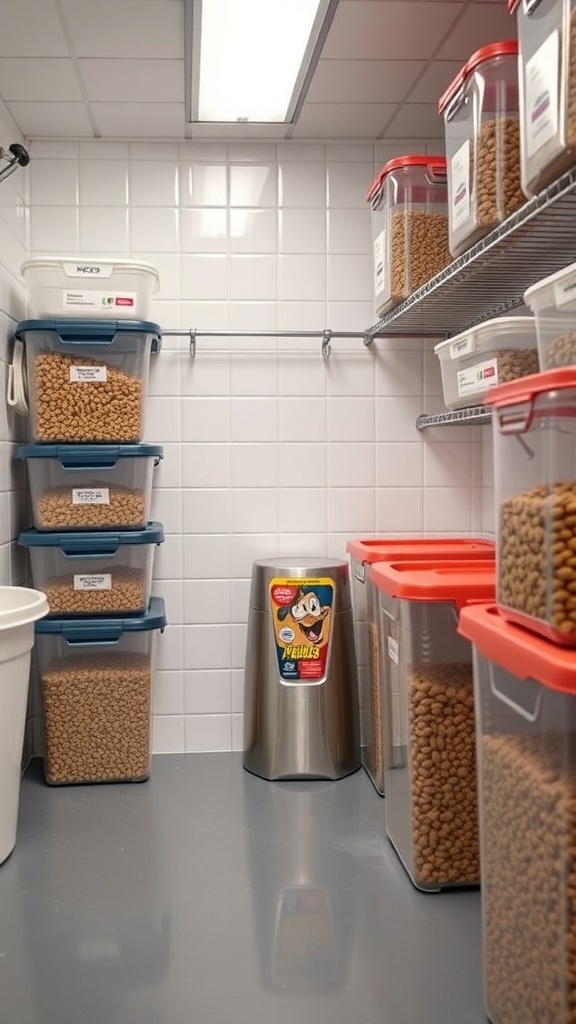
Keeping your dog food safe from pests and contamination is key to maintaining your pet’s health. The image shows a well-organized storage area with clear containers, which is a great way to start.
Using airtight containers is essential. They prevent moisture and pests from getting in. Notice how the containers in the image are stacked neatly. This not only saves space but also makes it easy to see how much food you have left.
Labeling your containers helps you keep track of different types of food. This way, you can avoid mixing them up and ensure your dog gets the right diet. The labels in the image show a thoughtful approach to organization.
Another tip is to store dog food in a cool, dry place. Heat and humidity can spoil the food quickly. The clean, tiled walls in the image suggest a hygienic environment, which is perfect for food storage.
Lastly, regularly check for any signs of pests. If you notice any, it’s best to clean the area thoroughly and take action immediately. Keeping your storage area tidy and well-maintained will help keep your dog food safe and fresh.
Travel-Friendly Dog Food Storage Solutions
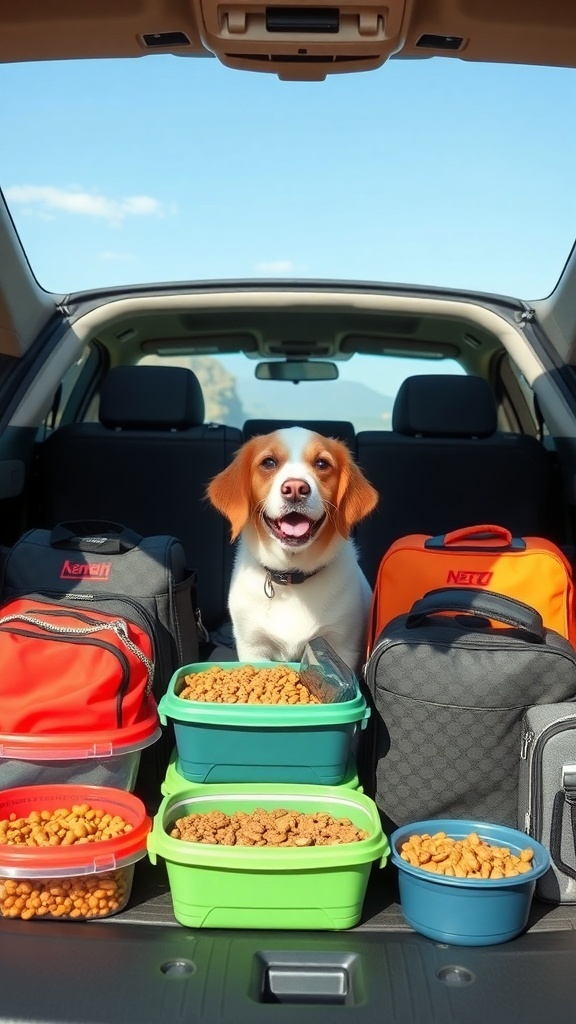
When hitting the road with your pup, having the right storage for dog food is key. The image shows a happy dog sitting in the back of a car, surrounded by colorful containers filled with various types of dog food. This setup is not just practical but also fun!
Using containers that seal tightly helps keep food fresh and prevents spills. The vibrant colors of the containers make it easy to identify different types of food, whether it’s kibble, treats, or something special for your dog. Plus, they fit neatly in your car, making travel a breeze.
Travel-friendly storage options can include insulated bags for keeping food at the right temperature. These bags are handy for longer trips, ensuring your dog’s meals stay fresh. Having a variety of sizes allows you to pack just what you need, avoiding waste.
Don’t forget to bring along a portable water bowl, too! Staying hydrated is just as important as having good food. With the right storage solutions, you and your dog can enjoy your travels without a hitch.
Cleaning and Maintaining Your Storage Containers
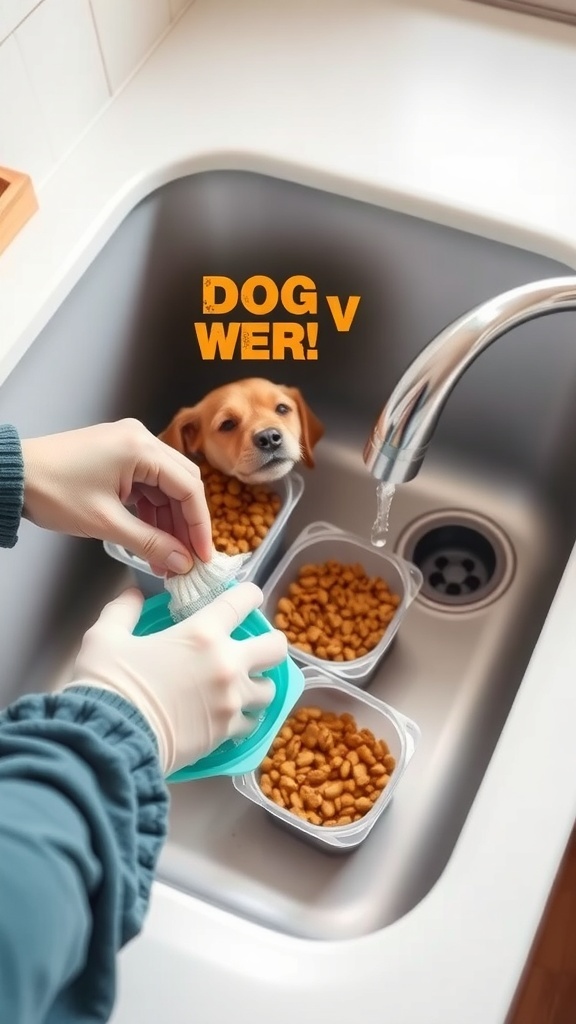
Keeping your dog food storage containers clean is key to ensuring your pup’s meals stay fresh and safe. In the image, we see someone washing out containers filled with dog food. This simple act helps prevent contamination and keeps the food tasting great.
Start by rinsing the containers with warm water to remove any leftover food particles. A gentle scrub with a sponge or cloth will do wonders. Make sure to clean the lids too, as they can trap odors and residue.
After washing, let the containers air dry completely before refilling them. This step helps avoid moisture buildup, which can lead to mold. Regular cleaning, perhaps once a month, will keep everything in top shape.
Lastly, always check for any signs of wear and tear. If a container is cracked or damaged, it’s time to replace it. Keeping your storage containers in good condition is essential for your dog’s health.